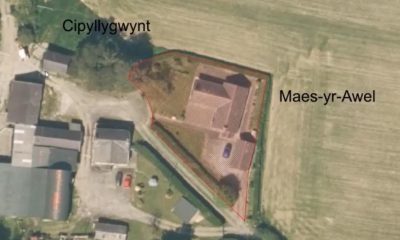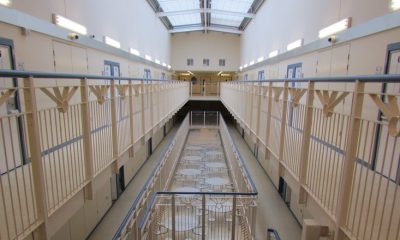News
Tom Sawyer: Ideas and action from Milford Haven’s new port boss
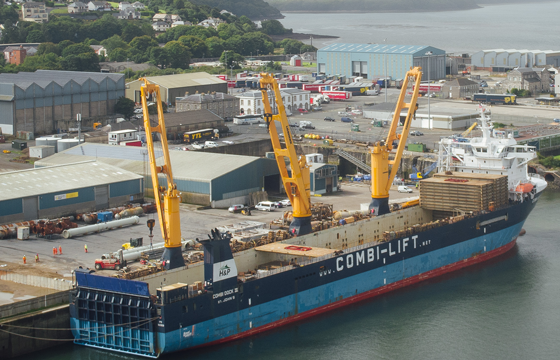
HERALD EDITOR TOM SINCLAIR SPEAKS TO THE NEW CHIEF EXECUTIVE OF THE PORT OF MILFORD HAVEN, TOM SAWYER
HE started off his working career, at 18, as an assistant at the Buchan Ness Lighthouse in Boddam, Scotland. So, the Port of Milford Haven’s new Chief Executive’s first post was linked to the sea. But then, following his father’s footsteps, he then joined the RAF – so how did a man who spent 26 distinguished years serving on land and in the air become the boss of one of the UK’s busiest ports?
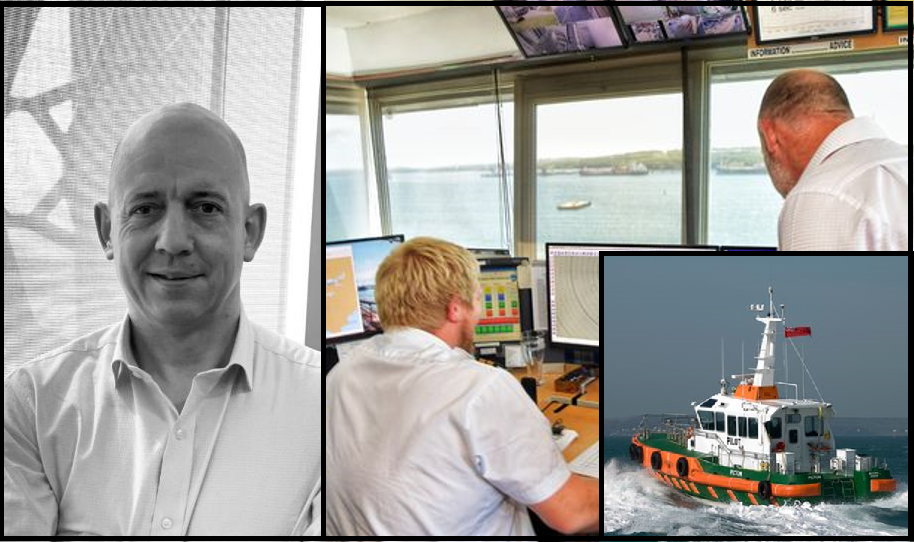
Tom Sawyer took control of the port at the end of April. He spent his many RAF years working on forces’ air-land integration. During our two-hour chat in his office, which has a huge window overlooking the waterway, he explained how his military service had taken him to such danger zones as Northern Ireland, Afghanistan, and Sierra Leone. We touched on how Russia had been doing this badly, leading to heavy losses in the Ukraine conflict. But we weren’t there to talk about the crisis in Ukraine, except to discuss if it would impact on port operations, so more on that later.
Mr Sawyer left the military in March 2011 and spent the next six and a half years working with QinetiQ. Whilst there in 2017, he led the initial business set up and strategy development of BQ Solutions, a Joint Venture in Qatar. Then, as the Business Development and Solutions Director, he was in the vanguard of the engagement into Qatar’s Ministry of Defence and its Armed Forces and played a central role in winning and delivering significant business that provided his clients with operational and commercial advantage.
This business experience, plus working for four and a half years in the firm he helped to create, combined with skills from his time in the military running air bases has stood him in good stead for his new role at the Port.
Mr Sawyer explained that an airport is a kind of port after all with “much of the same safety-critical and environmental considerations.”
Mr Sawyers’ promise when he joined the port just seven weeks ago was to: “build for the future and ensure the long-term relevance of the Port to the region and nation.”
A TIME FOR CHANGE
Mr Sawyer is taking the reins at the Port of Milford Haven at a time of innovation and exciting plans for change.
And building for the future he certainly is already; I spoke to the Port’s new Chief just one day after he had been at The Houses of Parliament, as part of the Milford Haven Waterway Future Energy Cluster. The two local MPs, Simon Hart and Stephen Crabb were both there – as was the Business, Energy and Clean Growth Minister Greg Hands.
Members of the Haven Waterway Future Energy Cluster – including Blue Gem Wind, Cambrian Offshore, DP Energy, Dragon LNG, ERM, Marine Energy Wales, RWE, Valero, Prosperity Energy, the Port of Milford Haven, South Wales Industrial Cluster, Offshore Renewable Energy Catapult and Pembrokeshire County Council – are working collaboratively to promote the Milford Haven Waterway’s pivotal role in delivering the UK’s net zero ambitions, offering a whole energy cycle solution that will ‘unlock accelerated transition, whilst stimulating economic growth.
Mr Sawyer admits it’s a big plan, with Milford Haven having the potential to provide 20% of the UK Government’s low carbon hydrogen production target by 2030 as well as 10% of its floating offshore wind target.
“One of the things we have is a steady wind supply in Wales”
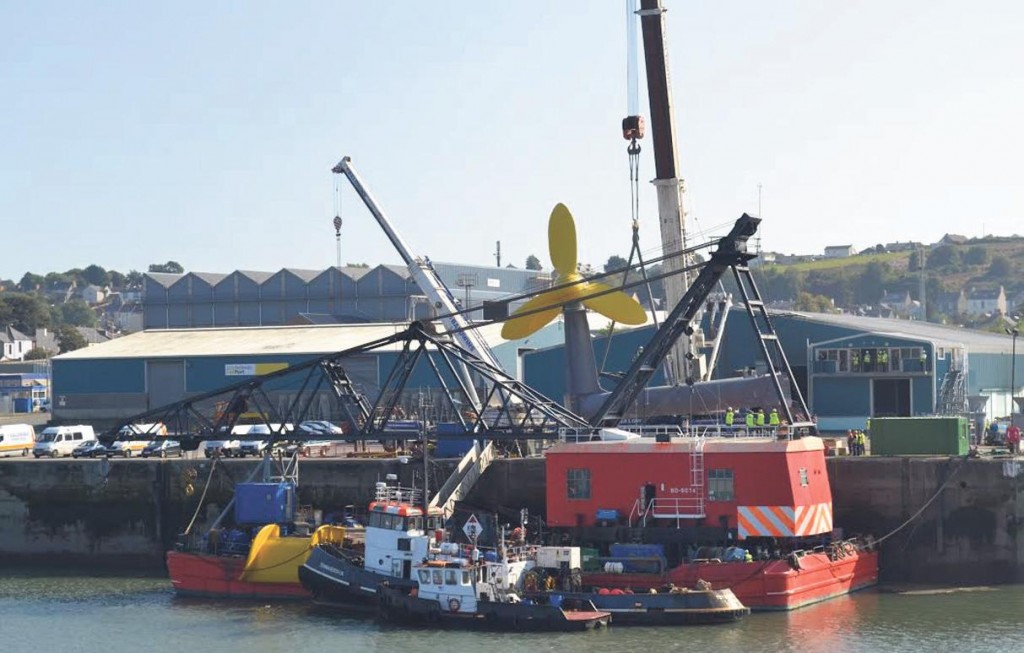
“We have tide and wind energy, and we need to adapt for these opportunities.”
We spoke about the £60 million Pembroke Dock Marine programme, which is designed to place Pembrokeshire at the heart of global zero carbon marine energy innovation while also helping tackle climate change.
The programme is expected to generate £73.5 million a year to the regional economy.
As well as having application across other blue economy industries, Pembroke Dock Marine will create the right conditions for the marine energy industry to flourish as the UK moves towards net zero decarbonisation targets.
Pembroke Dock Marine’s drive to maximise innovation and operational efficiencies will seek to drive down the cost of marine energy, while acting as a foundation programme that will support the growth of new initiatives in the region.
VALERO
As shipping movements currently account for 75% of the Port’s revenue I asked if he thought there was a future for the continued operation of Valero oil refinery in the long term. The plant is over fifty years old now, and some staff there have said it is showing its age.
In a nod to the predicted continuation of oil refining operations in Milford Haven, Tom Sawyer said: “The long-term future of Valero is in being here.”
Explaining that he could not speak for the management of Valero, he did say: “The refinery makes money, is thriving, and is operating at full speed.”
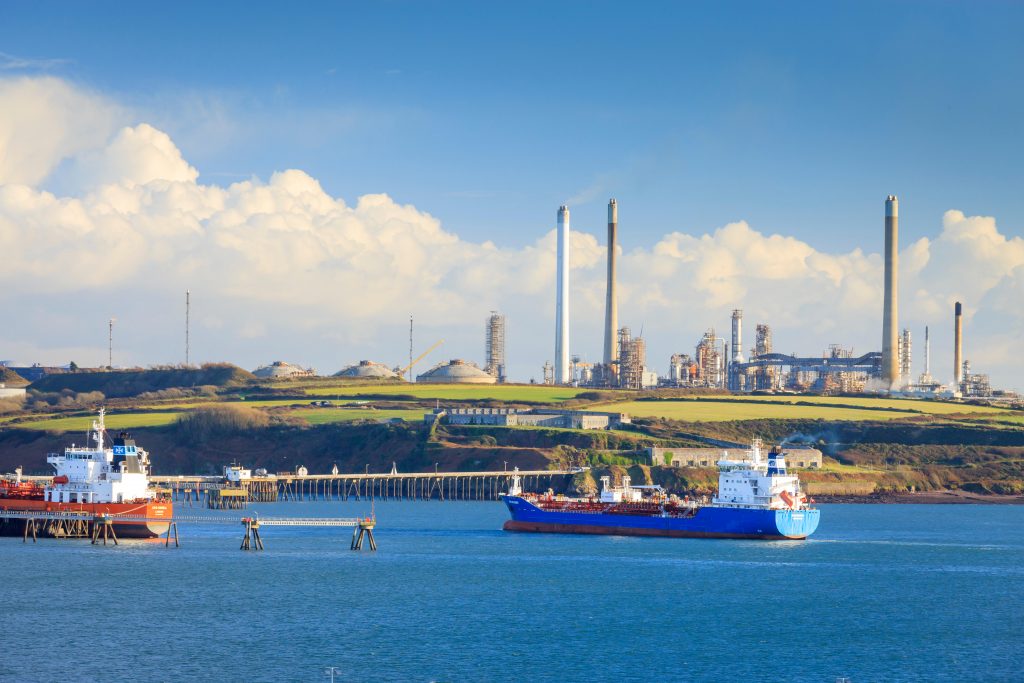
Pointing across to the window he said: “There is barely a day when there is an empty berth on the jetty over there.”
“There will be oil tankers coming in and out of this harbour for the next twenty or thirty years. Hydrogen and electric vehicles cannot replace fossil fuels overnight.”
“In addition, there are other products such as bitumen which cannot be replaced by a hydrogen alternative.”
OBJECTIVES
I asked Mr Sawyer about how he saw his new role, and to define objectives. He said: “I see myself as the current custodian of this trust port. My aim is that when I do eventually hand over this office to the next chief executive, that I do so with the Port in a better state than when I took it on.”
“75% of what we do is move ships, and we must continue to do that in a safe, resilient, reliable way and provide the right services for our stakeholders.”
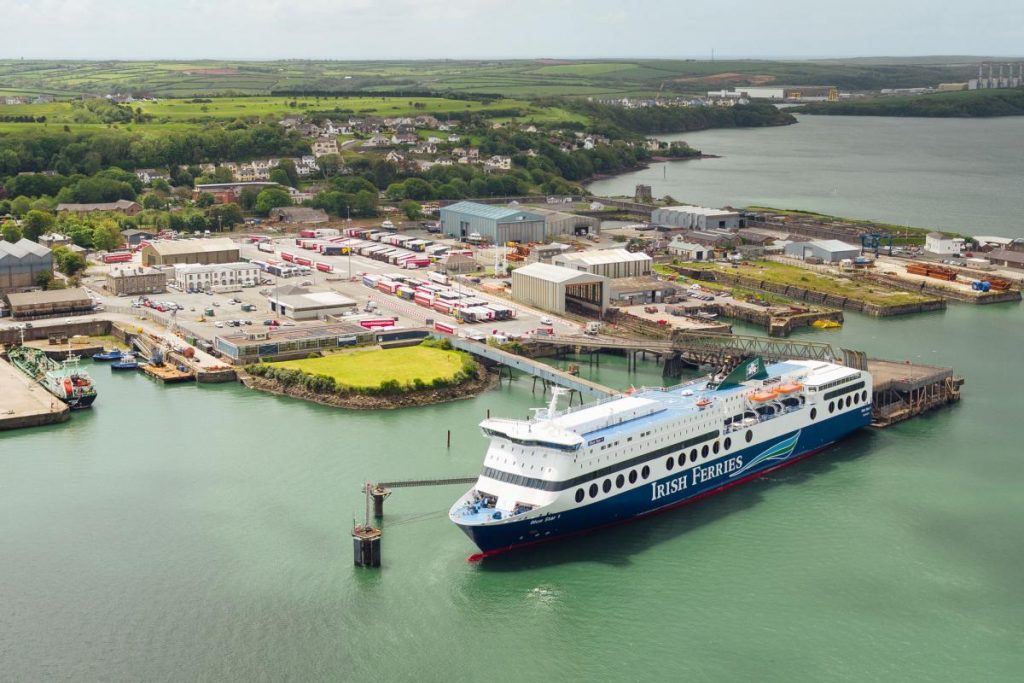
In relation to stakeholders and the wider community, he added: “The Port does have social obligations”
“I look out of my window every day and see a multi-million-pound industry, but at the same time I am aware that around 30% of children in Pembrokeshire are living in poverty.”
“That’s something we need to look at and work collaboratively with our stakeholders and partners on”, he said.
The new Port boss promises that he is committed to the local community, stating the Port’s role as a Trust Port to “contribute to the future prosperity, quality of life and wellbeing of the people of Pembrokeshire”.
He explained the importance of the Port to the locality in economic terms, explaining that the Port supports 200 jobs directly – mostly employing local people – and that the energy sector around the Port provides, according to early recent economic analysis by Cardiff Business School – around 3,500 jobs in the communities immediately surrounding the Waterway.
Mr Sawyer added that he wanted to promote the Port’s Community Fund and the Green Energy Fund.
He said: “We have funding in place to support worthwhile causes in the local community. I feel that we need to promote our Community Fund more as last year it was not fully subscribed.”
There will be more information in The Herald in the coming weeks about these two funds.
DOCKS DEVELOPMENT
The Milford Waterfront development is something that Mr Sawyer says would continue. He praised the business partnership with The Celtic Collection in running the new 100-bedroom hotel on the marina.
He said: “In regard to the development of the area further, I am keen that this is done in such a way that it should benefit the town centre and not distract from it.”
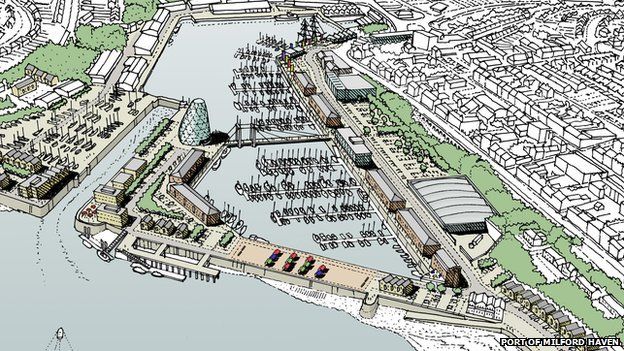
Mr Sawyer said that access between Milford Haven’s Charles Street and the Waterfront could be improved to facilitate this.
He said that he wanted there to be “more to do” at Milford Waterfront, and he said he did not want there to be only “places to eat and drink” but a range of activities to make the area more of an attraction – an example cited was a new canoe and kayaking businesses which was due to open soon near the old Cosalt building.
IMPROVEMENTS
We spoke about the November 2018 flood in Lower Priory and Havens Head.
There had been controversy at the time, with Stephen Crabb MP calling on the Port to take responsibility for the flooding. That never happened.
Mr Sawyer said: “There is a corporate recognition within the Port that communications between the various agencies and with residents were poor, and that things could have been handled better.
“There was no liability for the flood apportioned to the Port, but we should have been more forthcoming and supportive earlier on.
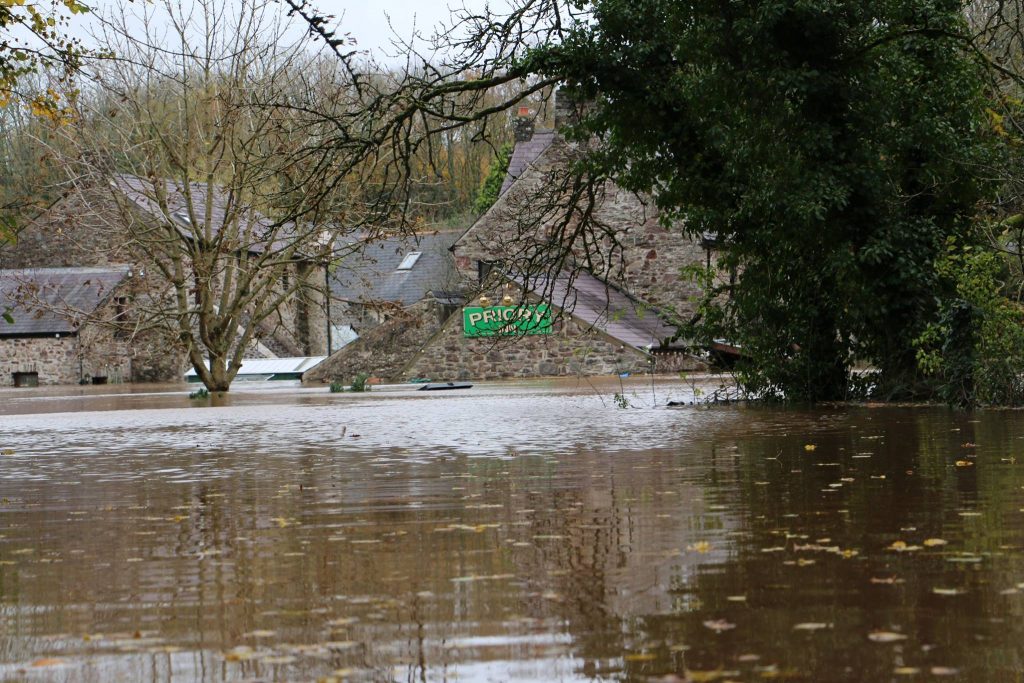
“We do understand that we have a role in collective community responsibility.
Mr Sawyer added: “The Port of Milford Haven commissioned its own analysis, in which we found that no activity would have made any difference in preventing the flood, given the tidal nature of the docks.
“We have invested significantly on improvements – such as new covers for culverts – and these modifications will make it safer for our team to deliver a new ‘good housekeeping’ plan, ensuring that rubbish can be kept clear of the culverts.” The Port is also working collaboratively with PCC to look at longer term improvements.
THE RUSSIA-UKRAINE WAR
Mr Sawyer explained that the Port, which handles 20% of the UK’s seaborne trade, had to conduct more checks now to ensure compliance with sanctions against Russia. He said: “We have a due diligence process and are conducting checks and balances on embargoed items.
“We have a new system of multiple checks on cargoes and produce a daily assurance list to ensure that all cargo meets the threshold (of being legal),”
He added that despite sanctions, which the Port would monitor carefully, it was unlikely that there would be a turndown in business.

Crime
Swansea man dies weeks after release from troubled HMP Parc: Investigation launched
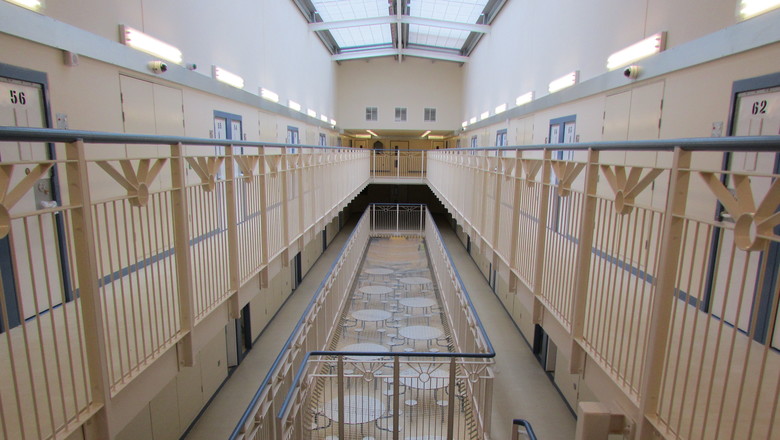
A SWANSEA man has died just weeks after being released from HMP Parc, the Bridgend prison now at the centre of a national crisis over inmate deaths and post-release failures.
Darren Thomas, aged 52, died on 13 November 2025 — less than a month after leaving custody. The Prisons and Probation Ombudsman (PPO) has confirmed an independent investigation into his death, which is currently listed as “in progress”.
Born on 9 April 1973, Mr Thomas had been under post-release supervision following a period at HMP/YOI Parc, the G4S-run prison that recorded seventeen deaths in custody in 2024 — the highest in the UK.
His last known legal appearance was at Swansea Crown Court in October 2024, where he stood trial accused of making a threatening phone call and two counts of criminal damage. During the hearing, reported by The Pembrokeshire Herald at the time, the court heard he made threats during a heated call on 5 October 2023.
Mr Thomas denied the allegations but was found guilty on all counts. He was sentenced to a custodial term, which led to his imprisonment at HMP Parc.
Parc: A prison in breakdown
HMP Parc has faced sustained criticism throughout 2024 and 2025. A damning unannounced inspection in January found:
- Severe self-harm incidents up 190%
- Violence against staff up 109%
- Synthetic drugs “easily accessible” across wings
- Overcrowding at 108% capacity
In the first three months of 2024 alone, ten men died at Parc — part of a wider cluster of twenty PPO-investigated deaths since 2022. Six occurred within three weeks, all linked to synthetic drug use.
Leaked staff messages in 2025 exposed a culture of indifference, including one officer writing: “Let’s push him to go tomorrow so we can drop him.”
Six G4S employees have been arrested since 2023 in connection with alleged assaults and misconduct.
The danger after release
Deaths shortly after release from custody are a growing national concern. Ministry of Justice data shows 620 people died while under community supervision in 2024–2025, with 62 deaths occurring within 14 days of release.
Short sentences — common at Parc — leave little time for effective rehabilitation or release planning. Homelessness, loss of drug tolerance and untreated mental-health conditions create a high-risk environment for those newly released.
The PPO investigates all such deaths to determine whether prisons or probation failed in their duties. Reports often take 6–12 months and can lead to recommendations.
A system at breaking point
The crisis at Parc reflects wider failures across UK prisons and probation. A July 2025 House of Lords report described the service as “not fit for purpose”. More than 500 people die in custody annually, with campaigners warning that private prisons such as Parc prioritise cost-cutting over care.
The PPO investigation into the death of Darren Thomas continues.
Crime
Woman stabbed partner in Haverfordwest before handing herself in

A WOMAN who stabbed her partner during a drug-fuelled episode walked straight into Haverfordwest Police Station and told officers what she had done, Swansea Crown Court has heard.
Amy Woolston, 22, of Dartmouth Street in Milford Haven, arrived at the station at around 8:00pm on June 13 and said: “I stabbed my ex-partner earlier… he’s alright and he let me walk off,” prosecutor Tom Scapens told the court.
The pair had taken acid together earlier in the day, and Woolston claimed she believed she could feel “stab marks in her back” before the incident.
Police find victim with four wounds
Officers went to the victim’s home to check on him. He was not there at first, but returned shortly afterwards. He appeared sober and told police: “Just a couple of things,” before pointing to injuries on his back.
He had three stab or puncture wounds to his back and another to his bicep.
The victim said that when he arrived home from the shop, Woolston was acting “a bit shifty”. After asking if she was alright, she grabbed something from the windowsill — described as either a knife or a shard of glass — and stabbed him.
He told officers he had “had worse from her before”, did not support a prosecution, and refused to go to hospital.
Defendant has long history of violence
Woolston pleaded guilty to unlawful wounding. The court heard she had amassed 20 previous convictions from 10 court appearances, including assaults, battery, and offences against emergency workers.
Defending, Dyfed Thomas said Woolston had longstanding mental health problems and had been off medication prescribed for paranoid schizophrenia at the time.
“She’s had a difficult upbringing,” he added, saying she was remorseful and now compliant with treatment.
Woolston was jailed for 12 months, but the court heard she has already served the equivalent time on remand and will be released imminently on a 12-month licence.
News
BBC apologises to Herald’s editor for inaccurate story

THE BBC has issued a formal apology and amended a six-year-old article written by BBC Wales Business Correspondent Huw Thomas after its Executive Complaints Unit ruled that the original headline and wording gave an “incorrect impression” that Herald editor Tom Sinclair was personally liable for tens of thousands of pounds in debt.

The 2019 report, originally headlined “Herald newspaper editor Tom Sinclair has £70,000 debts”, has now been changed.
The ECU found: “The wording of the article and its headline could have led readers to form the incorrect impression that the debt was Mr Sinclair’s personal responsibility… In that respect the article failed to meet the BBC’s standards of due accuracy.”
Mr Sinclair said: “I’m grateful to the ECU for the apology and for correcting the personal-liability impression that caused real harm for six years. However, the article still links the debts to ‘the group which publishes The Herald’ when in fact they related to printing companies that were dissolved two years before the Herald was founded in 2013. I have asked the BBC to add that final clarification so the record is completely accurate.”
A formal apology and correction of this kind from the BBC is extremely rare, especially for a story more than six years old.
-

 Crime2 days ago
Crime2 days agoDefendant denies using Sudocrem-covered finger to assault two-month-old baby
-

 Crime2 days ago
Crime2 days agoPembroke rape investigation dropped – one suspect now facing deportation
-

 Crime7 days ago
Crime7 days agoMan denies causing baby’s injuries as police interviews read to jury
-

 News2 days ago
News2 days agoBaby C trial: Mother breaks down in tears in the witness box
-

 Crime2 days ago
Crime2 days agoLifeboat crew member forced to stand down after being assaulted at Milford pub
-

 Crime3 days ago
Crime3 days agoDefendant denies causing injuries to two-month-old baby
-

 Crime3 days ago
Crime3 days agoPembrokeshire haven master admits endangering life after speedboat collision
-

 Crime19 hours ago
Crime19 hours agoMother admits “terrible idea” to let new partner change her baby’s nappies alone









